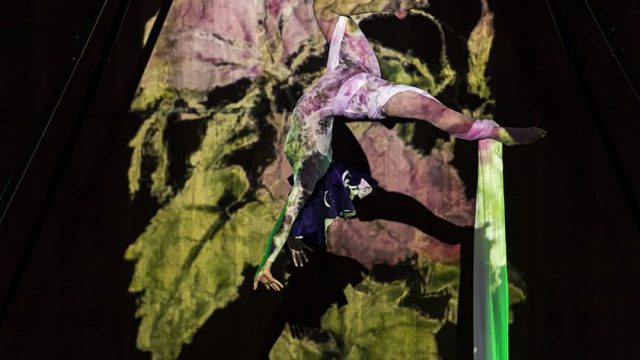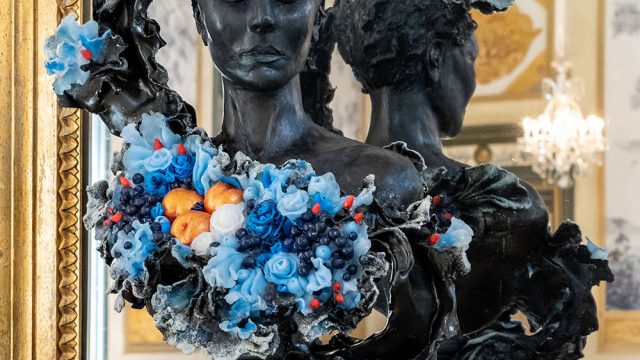
Some thoughts and responses to the installation of residency drawings and selected objects:
As part of the ‘stepping back’ process in order consider the installed works, I thought that I would ask some of the curators and conservators at the V&A for their thoughts. No single response to a work of art can be identical to another as we each carry with us our own individual life histories and cultural and social experiences. These are some of the responses that I have received so far and which seem to demonstrate this point:
Gill Saunders, Senior Curator, Word & Image Department:
‘I found myself intrigued by the ambiguities and contradictions the display presents us with. The presentation and the lighting create a sense of drama, yet the drawings themselves are immensely subtle, quiet and mysterious. Even though I have been closely involved with Siân’s project and have read the essays which will appear in the catalogue, I was puzzled by the materials and processes used to make the drawings. The ambiguities make us think about the “how” of drawing – how did she make those reflective marks? Are they marks or perforations? How many layers of paper are we looking at? Is it paper or some other material? How has it been coloured? In this context the papers themselves take on a very active role in the character and effects of the drawings; they are not simply passive supports but integral to the process and result.
I liked the sense of echoes and reflections which the display sets up between Gaze on one side and the museum objects on the other. The evidence for this “to and fro” of influence and inspiration is again very subtle; nothing is over-emphasised or spelled out too obviously. The chosen objects – despite their modest everydayness – carry an unexpected charge in this setting. As a curator, I am perhaps too prone to see objects simply as sources of information; here we see them as themselves. They are things made to used and handled, modest and practical things, but Siân has given them the status usually afforded to those things which are more evidently “works of art”. Because they are not “telling a story” in the usual manner of a museum display, they can stand for themselves alone, each in the spotlight for no other reason than that they intrigued or inspired the artist. In them we find reflections of her thinking, they are embodiments of materials, processes and meanings which she has translated through the act of drawing – and so we see there is a kind enriching circular process going on between reflection, observation, and drawing.’

Above: from ‘Gaze’ series, Gallery 102
Tim Travis, Curator, Word & Image Department:
‘I was struck – especially while we were working on the light levels for your display – by some of their qualities that remind me of the icons in our collection: the effect of the light from behind shining through the piercings so that one element of the drawing is made of light issuing from the pieces rather than just the marks made on the papers reminds me of a quality that Richard Temple calls the “the inner light of icons”. Icons were painted so that the light seemed to emanate from the subjects rather than falling on them – obviously this had a spiritual significance to icon painters but was imitated by later Russian artists too (including the socialist realists) for their own moral and political purposes.
The transforming/distorting effect of viewing objects through the claude glass reminds me of another property of icons called “inverse perspective” – vanishing points in front of instead of behind the picture plane – which had the effect of abstracting what was depicted from the real world and projecting it into the realm of the ideal.
Also the use of metal drawing materials to reflect light from the surface recalls the gold “crysography” on some icons – fine hatching in gold leaf to embellish and highlight them. Even the process of making a drawing by piercing the material calls to mind one of the traditional ways that the “pattern” of the icon was transferred to the prepared panel – holes were pricked along the outline of a tracing from an icon-makers pattern book (we have one in the collection) and then soot was rubbed through the holes onto the gesso ground to guide the painter. You’re an iconographer!’
Liz Miller, Curator of Prints, Word & Image Department:
‘The sheets of paper and vellum are very luscious but is it the drawing on them which makes them luscious? If the drawings weren’t there, would we just pass by as blank sheets? I was interested to hear that the holes were made with a laser because before I knew this I imagined the artist working with a pin and wondered how she had managed to be so regular or not tear the surface.
The display reminds me of English Artists Paper which I helped the guest curator John Krill with in 1987. He searched the collections for things which dramatised what he wanted to say about the history of paper. There was a ladder in that too. I like the idea of a hole which can be anything from a pin prick to a cave in the ice.
To me the drawings seem to be inspired by ‘Cindirella’ one of the pieces from the museum’s collections in the display with fold up flaps. I think I can even see some of the figures from it in one of the drawings. The lighting makes all the papers sing. You can see the laid lines in the Jacques le Moyne de Morgues and the pottery designs (more flaps) very beautifully and the way the paper in the drawing on the end has not settled evenly on the mould.’
Click on thumbnails for larger versions.







